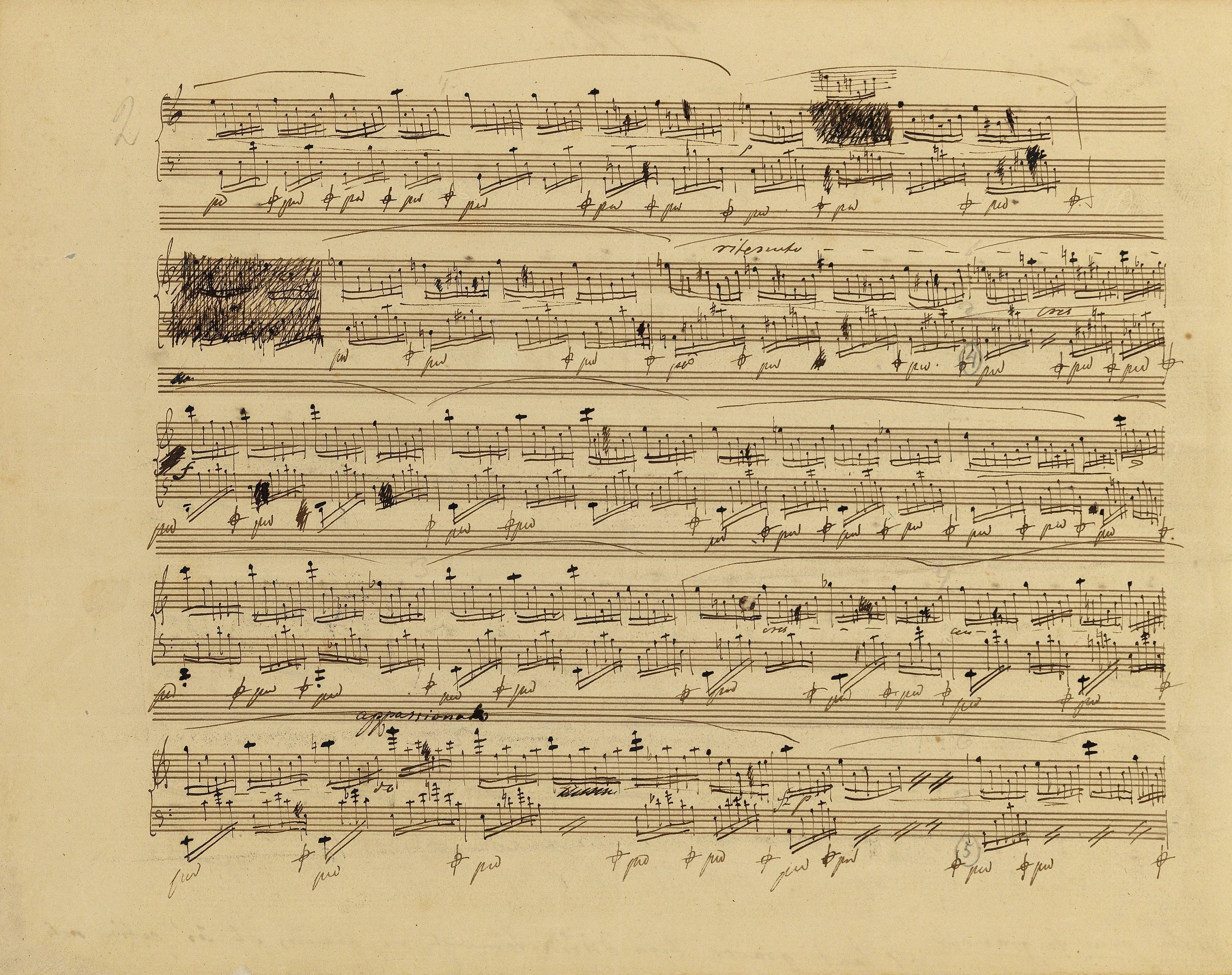



The changes, performed gradually in this bar, show well the type of improvements Chopin would introduce in this Etude at different stages of working on it:
-
harmonic changes – replacing the constant G bass note, present in AI, A (→CDP,GE1a) and EE with E
 -F-G in FE and GE1a (→GE2; in GE3 arbitrarily changed to G-F-G); see also the next note. Similar changes are to be found in, e.g., bar 7, 18 and 25;
-F-G in FE and GE1a (→GE2; in GE3 arbitrarily changed to G-F-G); see also the next note. Similar changes are to be found in, e.g., bar 7, 18 and 25; -
change of frequency of appearance of particular chord components and their doubling – hesitation between a
 1 and f1 on the 3rd beat of the bar, renouncing both f and one g in the 2nd half of this bar; this type of modifications of the arrangement of harmonic figurations appear, e.g., in bars 7-8, 16, 17, 29, 32-34 and 37;
1 and f1 on the 3rd beat of the bar, renouncing both f and one g in the 2nd half of this bar; this type of modifications of the arrangement of harmonic figurations appear, e.g., in bars 7-8, 16, 17, 29, 32-34 and 37; - changes of the number of notes in particular figures – in the 2nd half of the bar two sextuplets of AI were changed in A first into two quintuplets and then into a four- and five-note groups (the latter is present in all the remaining sources); a similar rhythmic smoothing is to be found in bars 16, 29 and 34.
The change of the fifth in the bass into third, enabling to avoid parallel octaves, is also to be found in the Etude in A minor, Op. 25 No. 4, bar 60.
Compare the passage in the sources »
category imprint: Differences between sources; Corrections & alterations
issues: Authentic corrections of FE, Authentic corrections of GE
notation: Pitch



